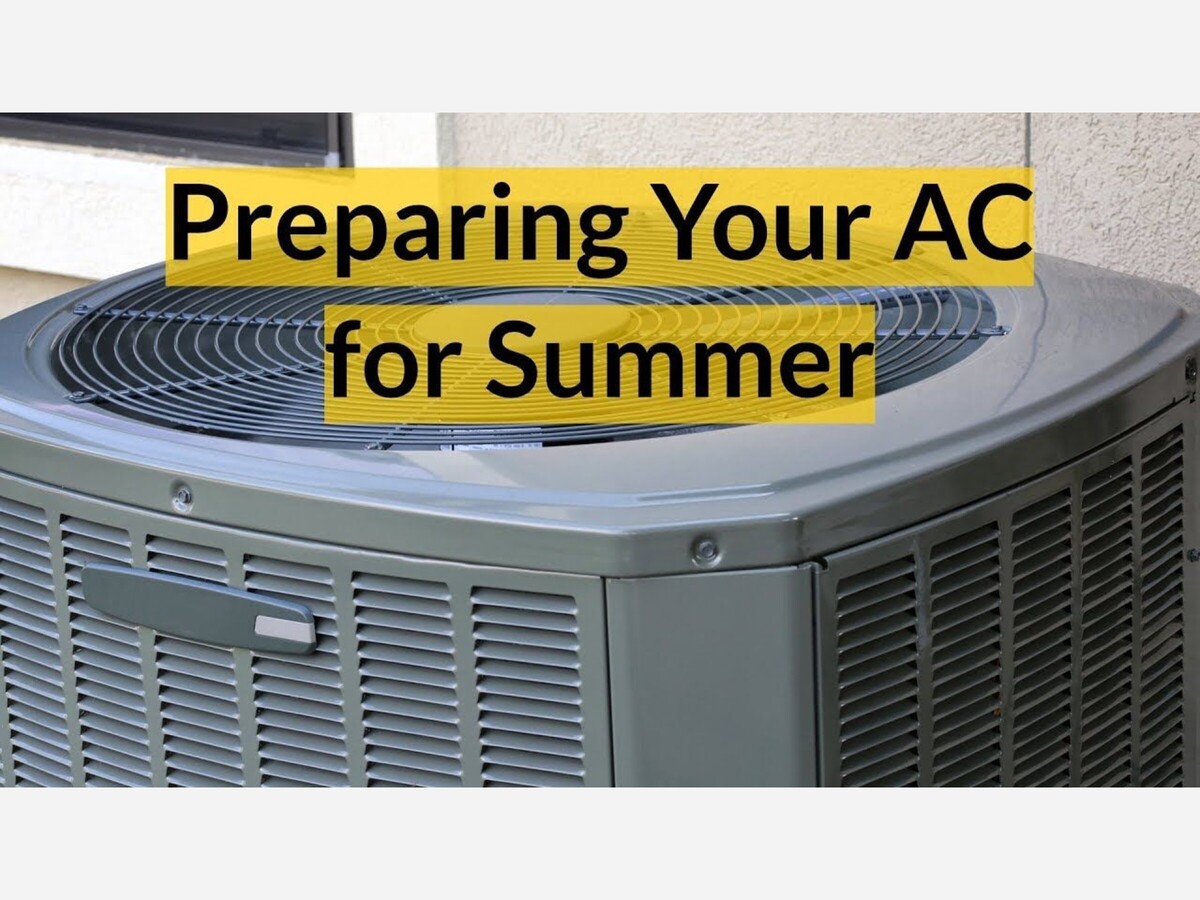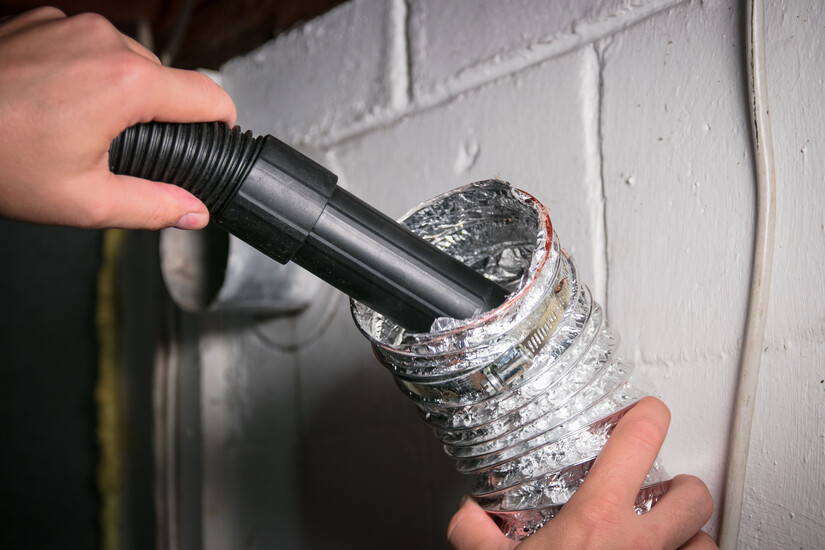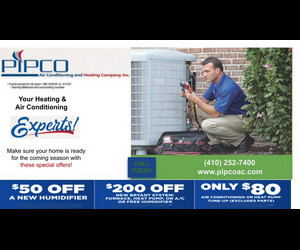Image

Getting Your HVAC System Ready for the Summer
When you live in the Maryland, you have to be sure that your HVAC system is ready for whatever the forecast holds. During the summer, sweltering temperatures and muggy conditions can test the limits of your cooling system. To ensure your air conditioner works like it should all season long, Timonium's PIPCO AC is sharing their secrets to keep HVAC equipment ready to work hard.
Read through the steps below, but remember, scheduling a preventive check-up is a fast, easy, effective way to get your cooling system ready for hot weather. By having regular maintenance tune-ups performed, you can learn about problems within your system and order the necessary repairs, so your heat pump, ductless air conditioner, or traditional split system works properly and uses less power.
When cold, frosty winter weather gives way to warmer spring temperatures, you may not use your HVAC system much at all. Many homeowners turn off their furnaces and air conditioners when the weather is comfortable, opting to open windows instead of using the home’s comfort systems.
It can be easy to overlook HVAC filter replacement when your system isn’t in use, which is why it’s critical to check your filter in the spring and replace it when it’s dirty.
Here are the steps for checking your HVAC filter and switching it out:
If you can tell that a filter replacement is necessary, remove the old unit and dispose of it. Take note of the dimensions by either looking for writing on the filter or using a measuring tape to measure the height, width, and depth of the screen. Purchase a filter with the same dimensions and place it within the HVAC screen like the previous version was if your unit uses a frame.
Place the filter inside the compartment, with special attention to the direction of the arrows on the side of the filter. Make sure the filter arrows are placed pointing in the direction air would move through the screen. Secure all doors or access panels to the compartment.
The vents in your home are responsible for delivering carefully heated and cooled air into your living space. Unfortunately, since vent covers have openings, the covers and interior of vents can become dirty due to settled dust, dropped household objects, or grime that flakes off of shoes as people walk across the floor. Cleaning air vents can protect indoor air quality and your air conditioner since excess grime can cause damage to the system. Here are a few tips for cleaning vent covers:
To keep indoor air cleaner, some vent covers contain supplemental air filters that sit right behind the grille. These filters should be replaced as soon as they appear dirty. If your covers use reusable filters, clean them thoroughly and allow them to dry before replacing them.

If you want to stop 20% to 30% of heating and cooling energy loss, start by checking your heating and cooling ducts. Many families lose a substantial amount of money unknowingly every year due to gaps in ductwork since damaged ducts allow heated and cooled air to fill voids like attics, basements, and wall interiors. If you are interested in reducing your costs and lowering your energy consumption, as well as protecting your HVAC equipment, perform a visual inspection of your ductwork. Take notes as you inspect your system so you can order professional repairs.
Inspect living areas for these issues:
Remember, with duct sealing, it’s possible to enjoy more of the carefully heated and cooled air you create with your HVAC equipment. Use less energy and enjoy a cool, comfortable home by having your ducts inspected and properly sealed.
Anytime the seasons change, it’s important to reevaluate your thermostat settings. It’s important to select temperature setpoints that are energy efficient, since some temperature settings lead your HVAC system to consume more energy than others, depending on the weather. You should also replace your unit’s batteries, even if your device is hardwired to your main electrical grid since this supplemental power gives your system the chance to run even during outages.
Ensure your thermostat is operating properly by testing your unit today. Follow these steps to make sure it is working properly:
If your system doesn’t turn on appropriately, remove the front of your thermostat faceplate to check for loose wires. Using a screwdriver, ensure that all connections are tight. Dusting out the interior of your thermostat can also resolve problems. Using a few blasts of canned air, you may be able to clear errors. If these troubleshooting tips don’t help your system to turn on, it may be time for a replacement thermostat.
Airflow is crucial to the overall functionality of your heat pump or air conditioner, and it all starts outside at your outdoor unit. If the fins that surround the compressor become dirty or clogged, your unit could overheat or malfunction. Go outside and take a few minutes to clean up your HVAC outdoor unit before summertime.
Refrigerant is the magic ingredient that helps air conditioners and heat pumps to do their jobs. Refrigerant acts as a liquid sponge, absorbing heat and transporting it appropriately in heat pumps and air conditioner cooling systems. Refrigerant lines connect indoor and outdoor equipment, but sometimes they develop damage that allows this liquid to leak out—which can make your air conditioner unable to do its job. Additionally, leaks of some refrigerant, such as R-22, pose environmental hazards.
Refrigerant lines run from the interior to the exterior of your home. Here are a few ways to spot air conditioner leaks.
 OVER 50 YEARS SERVING YOU
OVER 50 YEARS SERVING YOUIt’s never fun to experience the first day of summer without a working air conditioner. Make sure you’re not in for a surprise by testing your cooling system ahead of time. This way, any repairs can be taken care of ahead of the first day of summer rush.
Whether you know of existing HVAC problems or you want to upgrade your system before summer, contact PIPCO AC for assistance. With an entire team of NATE-certified HVAC technicians committed to helping with everything from air conditioning troubleshooting to duct sealing, they can help you to keep your home the perfect temperature all summer long.
When you live in the Maryland, you have to be sure that your HVAC system is ready for whatever the forecast holds. During the summer, sweltering temperatures and muggy conditions can test the limits of your cooling system. To ensure your air conditioner works like it should all season long, PIPCO is sharing their secrets to keep HVAC equipment ready to work hard.
Read through the steps, but remember, scheduling a preventive check-up is a fast, easy, effective way to get your cooling system ready for hot weather. By having regular maintenance tune-ups performed, you can learn about problems within your system and order the necessary repairs, so your heat pump, ductless air conditioner, or traditional split system works properly and uses less power
